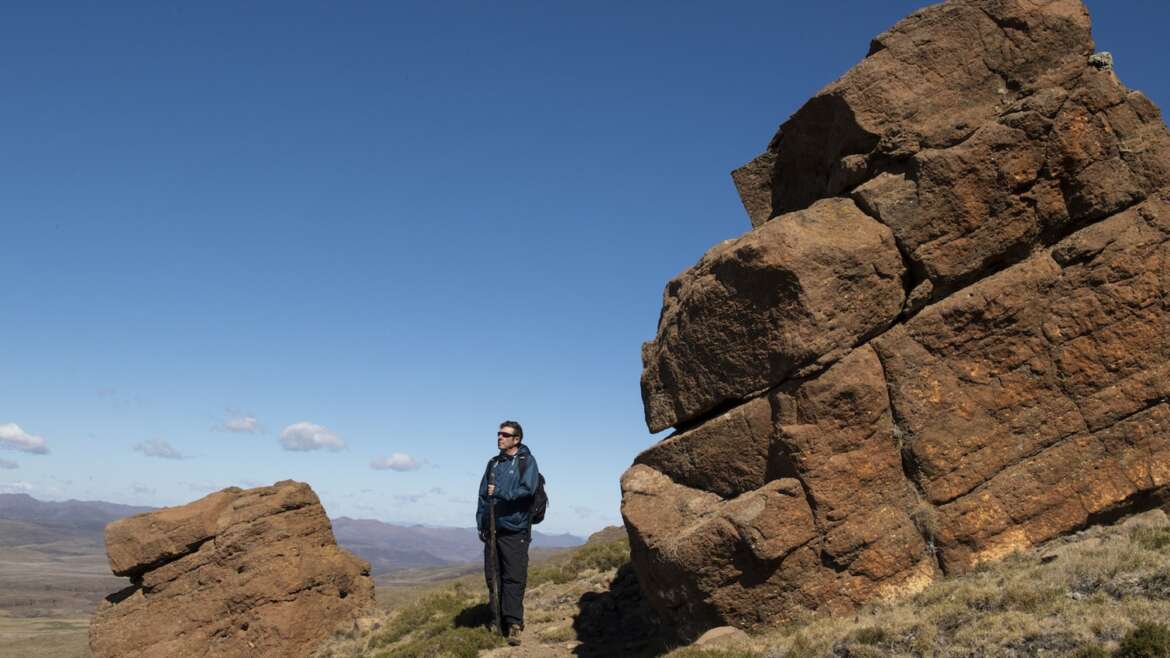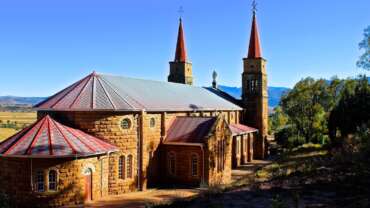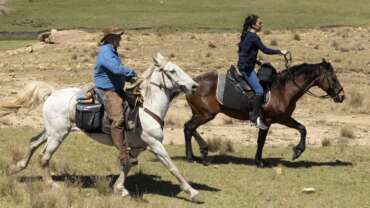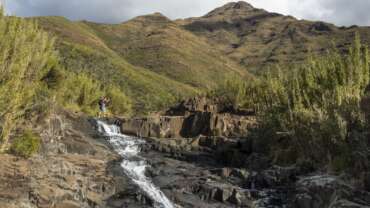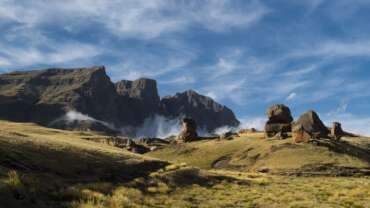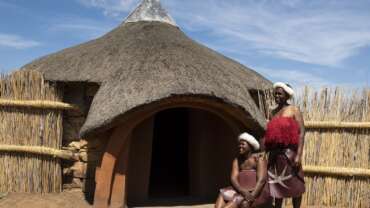Nature & Wildlife in Lesotho
Together with the neighbouring uKhahlamba-Drakensberg in South Africa, the highlands of Lesotho form a hub of ancient floral biodiversity known to botanists as the Drakensberg Alpine Centre. More than 2,000 plant species are indigenous to this region and of these roughly 30 percent are endemic (in other words, they occur nowhere else) and more than 100 are listed as globally threatened.
Lesotho is known for its prolific wildflowers, most of which bloom during the rainy summer months of November to April. But the floral landscape has much to offer at other times of year. Autumn is when the stunning red-hot pokers of the genus Kniphofia come into bloom, only to give way to aloes in winter. Both aloes and red-hot pokers have prominent red, yellow and orange flowers that form a magnet to nectarivorous insects and birds. One of the most spectacular and vulnerable of Drakensberg Alpine Centre endemics, the spiral aloe Aloe polyphylla is the national flower of Lesotho and easily recognised by its base of fleshy leaves arranged in a neat almost symmetrical spiral.
Lesotho lacks the prolific big game associated with some other larger African countries, but its national parks and nature reserves do support small herds of eland, oribi, grey rhebok and other antelope, along with baboons and smaller carnivores such as black-backed jackal, serval and caracal. The most conspicuous small mammal is the rock hyrax, which looks a bit like a guinea pig (though it is in fact more closely related to elephants than rodents) and is often seen sunning itself on boulders or cliffs. The endearing Sloggett’s ice rat, a Drakensberg Alpine Centre endemic associated with moorland above the 2,500m contour, is particularly common and conspicuous in the vicinity of Sani Top, and an important source of nutrition to highland raptors.
Despite its small size, Lesotho boasts a checklist of 350 bird species. This includes roughly half of those bird species whose natural range is restricted to South Africa, Lesotho and/or Swaziland. Among these, the Drakensberg rockjumper and Drakensberg siskin are endemic to the Drakensberg Alpine Centre, and this area also forms the core range of the southern bald ibis, Gurney’s sugarbird, yellow-breasted pipit, mountain pipit, buff-streaked chat, bush blackcap and Drakensberg prinia.
Other Southern African endemics likely to be encountered in parts of Lesotho include grey-winged francolin, ground woodpecker, forest buzzard, large-billed lark, African rock pipit, yellow-breasted pipit, chorister robin-chat, buff-streaked chat, sentinel rock thrush, pied starling, southern double-collared sunbird, greater double-collared sunbird, Cape weaver and forest canary.
The Drakensberg Alpine Centre is an important breeding stronghold for the cliff-nesting near-endemic jackal buzzard and Cape vulture, and it hosts southern Africa’s last viable breeding population of the bearded vulture or lammergeyer. Other noteworthy birds include the near-endemic blue crane, the handsome wattled crane, the large Alpine swift, and the nectarivorous malachite sunbird.



